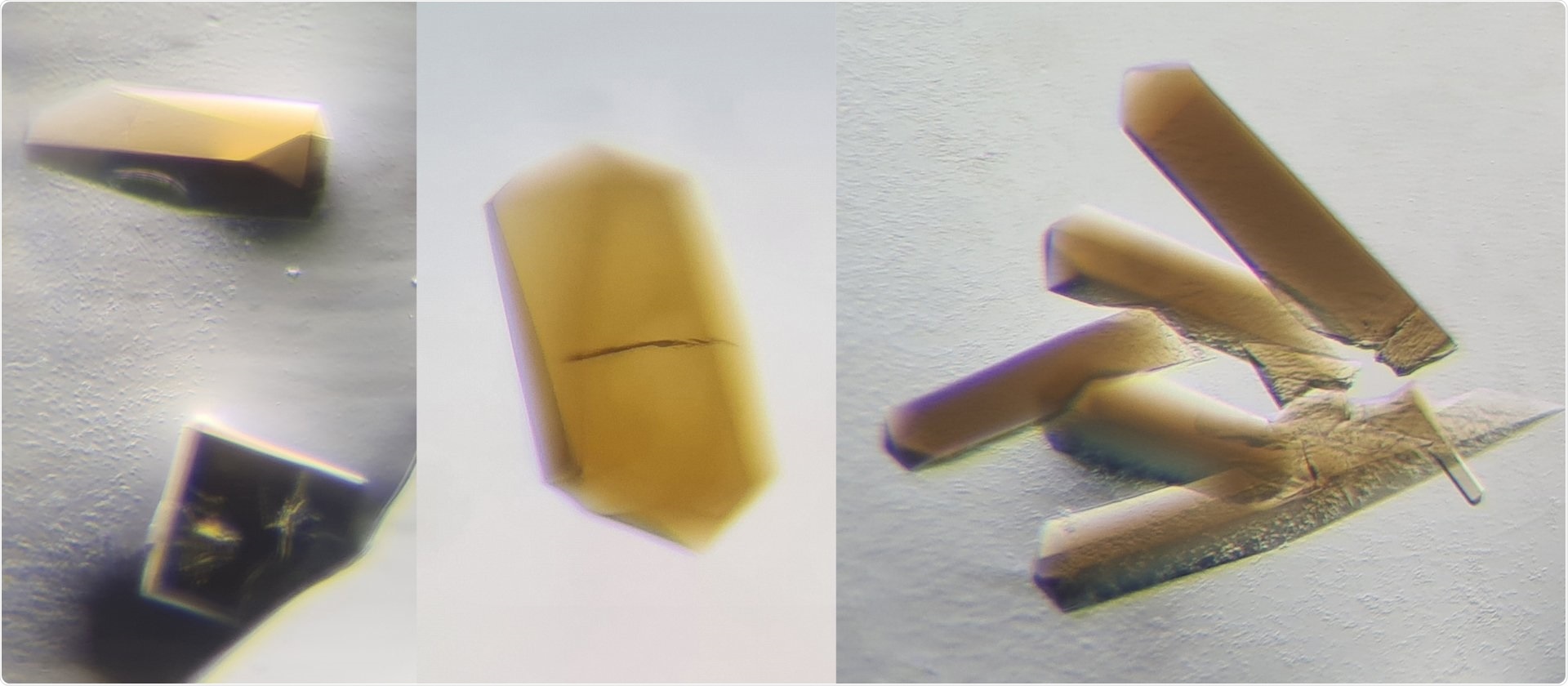Several branches of industry discharge waste gases that contain mostly carbon dioxide and carbon monoxide. Today, these waste gases are simply released into the air, but now thanks to a novel idea, this situation may soon change.

CODH/ACS crystals obtained without oxygen. The brown color is coming from the natural metals harbored by the proteins (depicted as orange and green balls in the Figure below). Image Credit: © Max Planck Institute for Marine Microbiology/T. Wagner.
The idea is to harness the power of bacteria to convert harmful waste gases into useful compounds, like ethanol or acetate. Later, these compounds can be utilized as basic compounds for synthetic materials or as biofuels.
Using this conversion method at an industrial scale, scientists are already evaluating the first real-size test plants, and bacteria are the stars of this process, devouring dihydrogen, carbon dioxide, and carbon monoxide, among which Clostridium autoethanogenum is the favorite, to date.
In this microbe, the main lines of the metabolism used to operate the gas conversion have been characterized. But there are still a lot of question marks at the molecular level.”
Tristan Wagner, Leader of Microbial Metabolism Group, Max Planck Institute for Marine Microbiology
One of the questions being focused on by Bremen-based researchers is how do the enzymes process the harmful carbon monoxide at such incredible efficiency?
Big surprise in a crystal
The molecular-level understanding of the conversion of carbon monoxide was acquired from research works conducted in the Moorella thermoacetica species. While this marine model organism is easy and extensively researched, it has a poor ability to purify waste gases, unlike the Clostridium autoethanogenum species.
The same enzyme is used by both kinds of bacteria to change carbon monoxide—the CO-dehydrogenase/Acetyl-CoA synthase, or CODH/ACS for short. This enzyme is very common and was already present during the prehistoric times of the Earth.
Since both species use the same enzyme to convert carbon monoxide, we were expecting to see exactly the same structure with eventually minor differences.”
Tristan Wagner, Leader of Microbial Metabolism Group, Max Planck Institute for Marine Microbiology
For their research, Wagner and his collaborator, Olivier N. Lemaire, are analyzing the Clostridium autoethanogenum bacterium to figure out how it can survive at the thermodynamics of life. They are using a metabolism that was analogous to that of the first living forms, for this purpose.
Lemaire cultured this microorganism and purified its CODH/ACS without oxygen, which is unfavorable to the enzyme. Then, using the crystallization technique, the team obtained crystals of the CODH/ACS enzyme and established the 3D structure of the protein through X-ray crystallography.
“When we saw the results, we couldn't believe our eyes. The CODH-ACS interface from Clostridium autoethanogenum drastically differs from the model of Moorella thermoacetica, even though it was the same enzyme and similar bacteria,” added Wagner.
Same ingredients, different architecture
The team subsequently performed additional experiments to demonstrate that the initial structure was not an artifact but rather the biological reality. The initial model was confirmed by subsequent experiments. Therefore, this finding clearly debunks the earlier assumption that the CODH/ACS enzyme invariably exhibits the same overall structure.
The enzyme of Moorella thermoacetica has a linear shape. In Moorella thermoacetica, the enzyme produces carbon monoxide in the CODH and uses in the ACS. Between them, it is trapped and funneled through a sealed gas-channel. ACS will ultimately synthesize acetyl-CoA, a building block further processed into acetate and ethanol. The rest of the cell does not see any carbon monoxide.”
Olivier N. Lemaire, Study First Author, Max Planck Institute for Marine Microbiology
The study was recently reported in the scientific journal, BBA Bioenergetics.
However, the Clostridium autoethanogenum bacterium directly absorbs carbon monoxide.
Lemaire added, “In Clostridium autoethanogenum, the enzyme CODH/ACS has not only one opening, but several. In this way it can collect as much carbon monoxide as possible and conduct it into a whole system of tunnels, operating in both directions.”
“These results show a reshuffling of internal gas-tunnels during the evolution of these bacteria, putatively leading to a bidirectional complex that ensures a high flux of carbon monoxide conversion toward energy conservation and assimilation of carbon monoxide, acting as the main cellular powerplant,” Lemaire further stated.
Ethanol and acetate are also produced towards the end of the process and these compounds can be used for producing fuels.
“We now have a picture of what this very efficient and robust enzyme looks like. But our discovery is only one step further. Among other things, it is still an open question of how the bacterium can survive and use carbon monoxide to feed their whole cellular energy needs. We have some hypotheses, but we are still at the beginning. To understand the whole chemical process of converting carbon monoxide to acetate and ethanol, further proteins need to be studied,” Wagner concluded.
Source:
Journal reference:
Lemaire, O. N., et al. (2020) Gas channel rerouting in a primordial enzyme: Structural insights of the carbon-monoxide dehydrogenase/acetyl-CoA synthase complex from the acetogen Clostridium autoethanogenum. BBA Bioenergetics. doi.org/10.1016/j.bbabio.2020.148330.